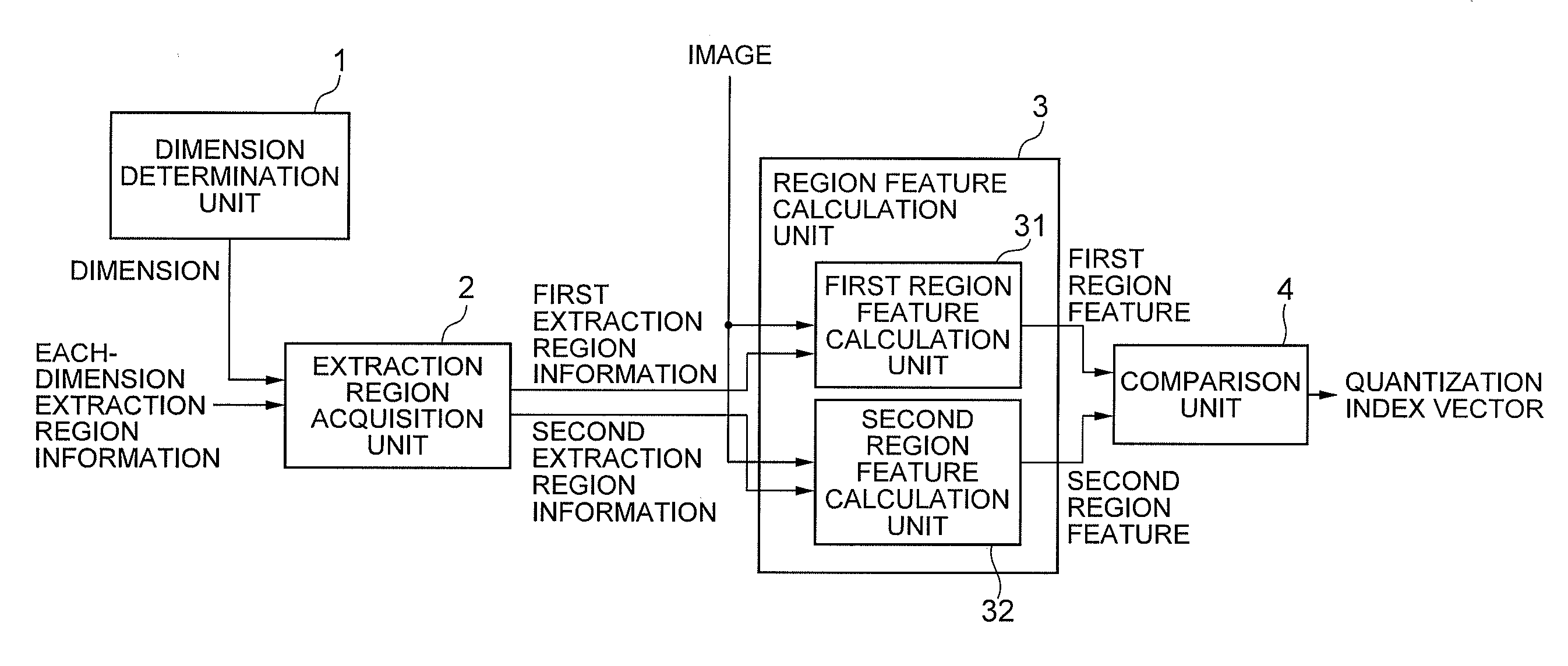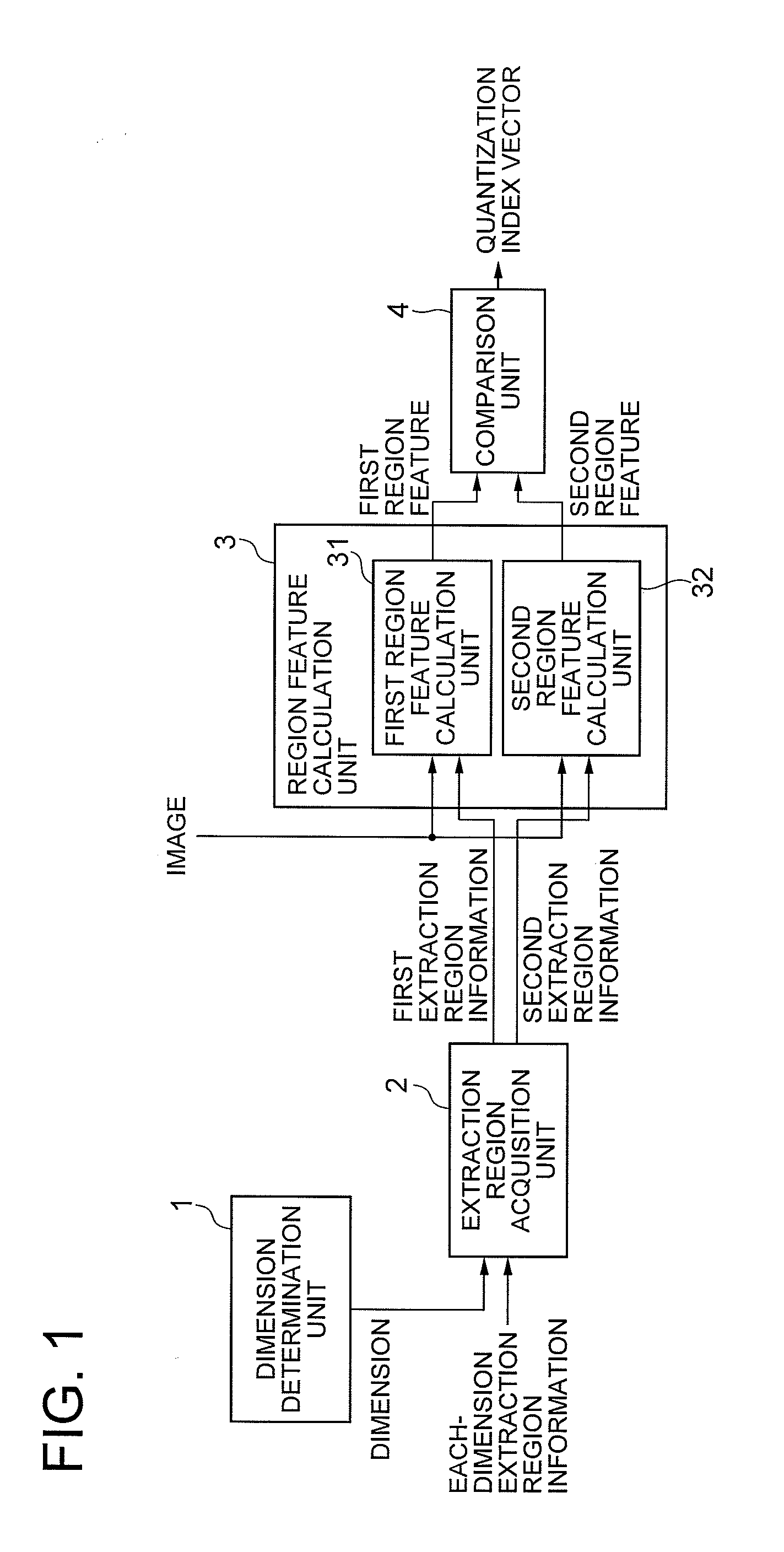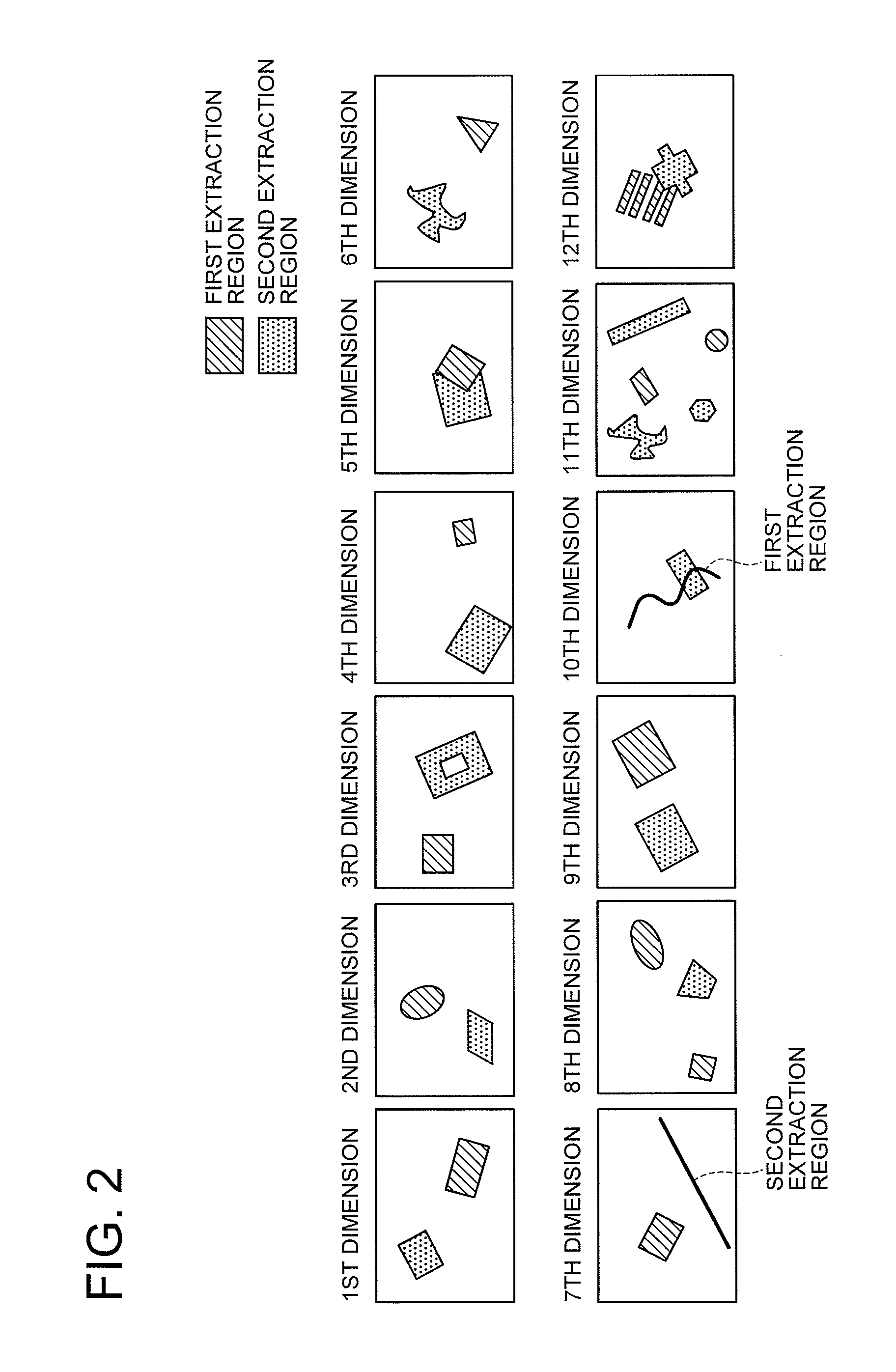Image signature extraction device
- Summary
- Abstract
- Description
- Claims
- Application Information
AI Technical Summary
Benefits of technology
Problems solved by technology
Method used
Image
Examples
first embodiment
[Operation of First Embodiment]
[0135]Next, operation of the image signature extraction device according to the first embodiment will be described with reference to the flowchart of FIG. 5. In the flowchart of FIG. 5, a dimension (number) of a feature vector is indicated by “n”, and there are N dimensions in total from 1 to N.
[0136]First, the dimension determination unit 1 determines a dimension 1 as the first dimension (n=1) for extracting a feature vector, and supplies it to the extraction region acquisition unit 2 (step A1).
[0137]Next, the extraction region acquisition unit 2 acquires information indicating a first extraction region and a second extraction region of the dimension n from each-dimension extraction region information supplied as an input, and supplies it to the region feature calculation unit 3 (step A2).
[0138]Then, the region feature calculation unit 3 calculates a first region feature and a second region feature of the dimension n from the image supplied as an inpu...
second embodiment
[Operation of Second Embodiment]
[0162]Next, operation of the image signature extraction device according to the second embodiment will be described with reference to the flowchart of FIG. 7. In the flowchart of FIG. 7, a dimension (number) of a feature vector is indicated by “n”, and there are N dimensions in total from 1 to N.
[0163]First, the dimension determination unit 1 determines a dimension 1 as the first dimension (n=1) for extracting a feature vector, and supplies it to the extraction region acquisition unit 2 (step B1).
[0164]Next, the extraction region acquisition unit 2 acquires information indicating a first extraction region and a second extraction region of the dimension n from each-dimension extraction region information supplied as an input, and supplies the information to the region feature representative value calculation unit 3 (step B2).
[0165]Then, the region feature representative value calculation unit 3 calculates a first region feature and a second region feat...
third embodiment
[Effect of Third Embodiment]
[0203]In addition to the advantageous effects of the first embodiment, the third embodiment has an advantageous effect that the discrimination capability which is a degree of discriminating different images can be further improved.
[0204]This is because as the region feature calculation methods are different among the dimensions (variable region feature calculation methods are used), correlation among dimensions can be small.
Fourth Embodiment
[Configuration of Fourth Embodiment]
[0205]Next, a fourth embodiment of the present invention will be described in detail with reference to the drawings.
[0206]Referring to FIG. 11, the configuration of the fourth embodiment of the present invention is different from that of the first embodiment shown in FIG. 1 in that a comparison method acquisition unit 6 is added, and the comparison unit 4 is replaced with a comparison unit 4B. As the other components are the same as those of the first embodiment, the explanation ther...
PUM
 Login to View More
Login to View More Abstract
Description
Claims
Application Information
 Login to View More
Login to View More - R&D
- Intellectual Property
- Life Sciences
- Materials
- Tech Scout
- Unparalleled Data Quality
- Higher Quality Content
- 60% Fewer Hallucinations
Browse by: Latest US Patents, China's latest patents, Technical Efficacy Thesaurus, Application Domain, Technology Topic, Popular Technical Reports.
© 2025 PatSnap. All rights reserved.Legal|Privacy policy|Modern Slavery Act Transparency Statement|Sitemap|About US| Contact US: help@patsnap.com



